The State Of
Software Security
2016 Executive Summary
For the seventh year running, Veracode presents the security industry with an in-depth view of valuable application security statistics through the State of Software Security (SOSS). This is no mere survey report. The metrics presented here are based on real application risk postures, drawn from code-level analysis of billions of lines of code across 300,000 assessments performed over the last 18 months.
Veracode's intention is to provide security practitioners with tangible AppSec benchmarks with which to measure their own programs against. We've sliced and diced the numbers to offer a range of perspectives on the risk of applications throughout the entire software lifecycle. This includes statistics on policy pass rates against security standards, the statistical mix of common vulnerability types found in applications, flaw density and average fix rate.
Last year the report spent considerable time examining benchmarks by industry vertical performance. This volume follows up on those measurements with some valuable updates. But before doing so, Volume 7 of SOSS takes a close look at remediation analysis statistics and third-party component vulnerabilities across all industries.
In examining overall industry remediation trends, the report offers some important insight to practitioners about how well their peers are following up on first-time security scans to continually improve security. Additionally, the analysis closely examines some important factors that will impact how effectively organizations are improving their vulnerability fix rates. Meanwhile, the spotlight on third-party component vulnerabilities sheds some light on common vulnerability tendencies, specifically within Java components. The analysis provides conclusions that can help practitioners get a better handle on the implications of component risk against overall application risk.
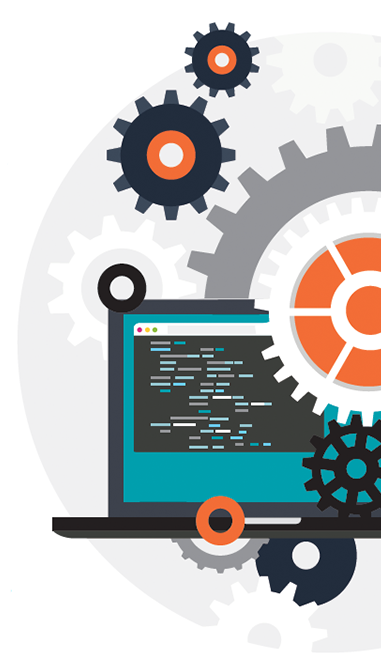
Overall Statistics
Before we dive into more detailed explorations of remediation practices, industry benchmarks and the intricacies of component vulnerabilities, we felt it important first to get a level-set on the overall state of enterprise software security.
One thing to keep in mind when looking at these overview stats and many others deeper into the report is that unless otherwise noted, the statistics here are based upon software never before scanned for security flaws. In essence, these are the raw numbers that reflect the initial security of the code before any remediation efforts have been made or rescanning has taken place.
Based on our long-running research into these raw numbers, we can say with some degree of accuracy that for the most part they have tended to remain fairly consistent year over year. These consistent measurements show that:
The fact that this number fundamentally doesn’t change year over year indicates that there’s a lot of software out there that has still not been brought through a formal security improvement process—whether unremediated legacy code or new code that's not developed via a rigorous secure software development lifecycle (SDLC).
This steady raw state of software security should underline for organizations the fact that even companies with mature application security programs only scan a fraction of their portfolio. And those are the ones that are doing it well. There are many others that aren't doing it at all. This is not meant to be disheartening. Instead, it offers some perspective on the breadth of the problem and the need for sustained and continuous improvement.
OVERALL OWASP TOP 10/SANS TOP 25 POLICY PASS RATES
Bearing that in mind, let's start first with some simple pass-fail rates from two different perspectives. The first is measured against compliance with the OWASP Top 10 Project standards. The second is measured against SANS Top 25 standards. While there's certainly overlap, each set of standards are based on criteria that build slightly different risk pictures for metrics-oriented security teams. OWASP is very tightly focused on web applications from the point of view of that threat space. Meanwhile, though Veracode hasn't talked a lot about the SANS standards in past software security reports, they offer another take based on a slightly different set of threats that includes categories such as those only relevant for client-side applications, for instance.
Percentage of applications passing CWE/SANS Top 25 policy
Interestingly, the pass-fail rates are very similar when comparing these benchmarks side by side, with a difference of just five percentage points between them. This gives security managers some food for thought when it comes to not sweating the small stuff. The conclusion here may be that it isn't as important which benchmark is used to measure the overall state of your code base, just so long as you do choose a benchmark to calculate improvements in application risk posture.
THIRD-PARTY VERSUS INTERNAL PASS RATES
One trend that Veracode has been tracking over the history of the SOSS is the surprising disparity in pass rates when comparing internally developed applications to commercially developed applications.
It may seem counterintuitive, but year after year our data shows that commercially developed software performs no better in initial scans than internally developed software. In fact, it usually performs significantly worse. These pass rates are based both upon applications from the technology industry vertical, which includes commercial software applications, as well as commercial applications submitted on behalf of enterprises and assessed through Veracode's vendor application security testing (VAST) program.
OWASP Top 10 policy compliance of commercially developed vs. internally developed applications
Internally developed
(SDLC)
Passed 2015: 37%
Commercially developed
(Third party)
Passed 2015: 28%
This data continues to prove out our annual observations on this front. And, in fact, while internally developed applications showed a small uptick in improvement over time, commercial software actually trended down slightly compared to last year. This finding puts to bed vague vendor hype around unsubstantiated efforts to build assurance into their products. It reaffirms the need for organizations to demand better proof of software security from their vendors and to perform due diligence around all applications, including commercial software.
OVERALL VULNERABILITY PREVALENCE
When breaking down vulnerabilities by common categories, we do base all of our findings on the MITRE common weakness enumeration (CWE) taxonomy. However, the level of detail of CWE categories makes it such that there are too many categories to quickly and easily communicate the most common broad classes of vulnerabilities that present themselves in applications. In order to solve that problem, we roll up numerous CWE categories into about 30 higher level categories and present here the top 10 most prevalent to occur in first-time application scans.
- Authentication Issues: This category is for vulnerabilities that weaken the mechanisms an application uses to identify a real user. Flaws include using insecure mechanisms like the DNS to establish identity, allowing cross-site request forgery, allowing login with very common username/password combinations or allowing login via SQL injection.
- CRLF Injection: This includes any vulnerability that enables any kind of Carriage Return Line Feed (CRLF) injection attacks. Included here are flaws involving improper output neutralization for logs and improper neutralization of CRLF in HTTP headers.
- Code Quality: These are sloppy issues in code quality that could eventually impact the security of the application. Some examples include improper resource shutdown or release, leftover debug code and using the wrong operator when comparing strings.
- Command or Argument Injection: One of the most severe categories of vulnerabilities, these issues allow an attacker to run arbitrary commands on the server hosting the application, giving them complete control of the environment.
- Credentials Management: These are errors in the handling of user credentials that can enable attackers to bypass access controls. Some of the most common errors include hard-coded passwords and plaintext passwords in config files and elsewhere.
- Cross-Site Scripting (XSS): These are vulnerabilities that give attackers the capability to inject client-side scripts into the application, potentially bypassing security controls in the process.
- Cryptographic Issues: This includes a number of risky cryptographic practices, including using broken crypto algorithms, improperly validating certificates, storing sensitive information in cleartext and employing inadequate encryption strength.
- Deployment Configuration: These are vulnerabilities that are related to an insecure configuration of an application at runtime, such as incorrect use of the HttpOnly flag on cookies, or incorrect configuration of a cross-domain security policy in a Flash object or in JavaScript code.
- Directory Traversal: These are flaws that open up the possibility of attacks that give malicious actors the capability to gain unauthorized access to restricted directories and files.
- Encapsulation: These are vulnerabilities that involve code that doesn't sufficiently encapsulate critical data or functionality. This includes trust boundary violations, protection mechanism failures and deserialization of untrusted data.
- Information Leakage: These are flaws that allow the application to reveal sensitive data about the application, environment or user data that could be leveraged by an attacker to hone future successful attacks against the application.
- Insufficient Input Validation: Tainted input is the root cause of many security headaches. This category includes a number of input validation flaws that open up the application to malformed input that can cause security issues. This includes vulnerabilities involving open redirect and unsafe reflection.
- Server Configuration: Like deployment configuration issues, these are failures to configure the application securely. These flaws include forced downgrades in encryption, enabling proxy access to secure resources elsewhere on the network and easily compromised storage of sensitive information about users or sessions.
- Session Fixation: These are authentication-related vulnerabilities where the application fails to correctly invalidate an expired session, allowing an attacker to impersonate a user.
- SQL Injection (SQLi): One of the most severe categories of this group, these are any vulnerabilities that allow the attacker to gain unauthorized access to a back-end database by using maliciously crafted input.
And here's how commonly these top ten vulnerabilities were found within applications scanned for the first time. These percentages were calculated based on an aggregate of both static and dynamic application tests.
| Category | % Apps |
| Information Leakage | 72% |
| Cryptographic Issues | 65% |
| Code Quality | 62% |
| CRLF Injection | 53% |
| Cross-Site Scripting | 50% |
| Directory Traversal | 49% |
| Insufficient Input Validation | 44% |
| Credentials Management | 41% |
| SQL Injection | 32% |
| Encapsulation | 25% |
In looking at these overview statistics of vulnerability prevalence, it is interesting to note that while XSS and SQLi vulnerabilities do garner the most front-page news today due to the severity of their consequences, they are far from the most common vulnerability types. There are numerous other vulnerability categories out there that occur in the wild much more prolifically, many of which contain some pretty severe individual vulnerabilities within them. For example, take the occurrence of hard-coded passwords within the credentials management category. Just that single vulnerability type alone occurs more frequently than SQLi flaws. Nevertheless, SQLi's appearance in 32% of applications makes it the most prevalent severe vulnerability. The existence of XSS in fully half of all newly scanned applications makes it the most frequently occurring serious vulnerability.
Some individual vulnerability statistics worth noting that bubbled up from these overall vulnerability categories:
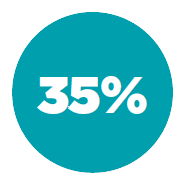
of all applications used some kind of hard-coded password (Credentials Management)
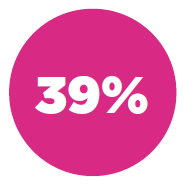
of all applications use broken or risky cryptographic algorithms (Cryptographic Issues)
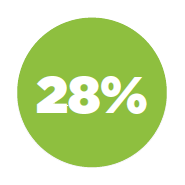
of all applications were vulnerable to open redirect attacks that give remote attackers the power to redirect users to arbitrary websites (Input Validation)

of all applications mix trusted and untrusted data in the same data structure or structured message, making it easier to trust unvalidated data
STATIC VERSUS DYNAMIC VULNERABILITY PREVALENCE
Drawing the lens tighter on the breakdown of vulnerability prevalence, we also found some interesting differences in the distribution of vulnerabilities when we compared it based on the type of testing used to scan code.
The table below compares side-by-side the prevalence of vulnerabilities in previously untested applications when scanned by dynamic versus static testing techniques. When looking at it from this view, it becomes clear that there are significant differences in the types of vulnerabilities that are commonly discovered by looking at applications dynamically at runtime, as compared to static tests in a non-runtime environment. While often viewed as more thorough than dynamic testing, the data here makes it clear that there are actually numerous types of vulnerabilities that dynamic testing does a better job unearthing. Taking a look at the top five dynamic categories, one can see that two of them are significantly more prevalent than their static rank would indicate and one category is not present at all.
The major takeaway here is that neither type of test is necessarily better than the other, they're just different. As such, it is important for security managers to remember that no single testing mechanism is going to solve all of their application security problems. It takes a balanced approach to properly evaluate and mitigate the risks.
| CWE CATEGORY | DYNAMIC RANK | DYNAMIC % APPS AFFECTED | STATIC RANK | STATIC % APPS AFFECTED |
| Information Leakage | 86% | 1 | 1 | 69% |
| Cryptographic Issues | 58% | 2 | 3 | 65% |
| Deployment Configuration | 57% | 3 | na | na |
| Encapsulation | 39% | 4 | 11 | 22% |
| Cross-Site Scripting (XSS) | 25% | 5 | 6 | 52% |
| Credentials Management | 15% | 6 | 8 | 43% |
| Session Fixation | 12% | 7 | 15 | 15% |
| Server Configuration | 10% | 8 | 24 | 3% |
| SQL Injection | 6% | 9 | 9 | 35% |
| Authentication Issues | 4% | 10 | 23 | na |
| Insufficient Input Validation | 3% | 11 | 7 | 48% |
| Directory Traversal | 2% | 12 | 5 | 54% |
| Code Injection | 1% | 13 | 21 | 4% |
| Command or Argument Injection | 1% | 14 | 13 | 15% |
| CRLF Injection | <1% | 15 | 4 | 59% |
There's also one final observation to note about the top vulnerabilities found by dynamic testing. When we look at three of the top four vulnerability categories—cryptographic issues, deployment configuration and encapsulation—we start to see that these can all be lumped into a broader class of flaws that involve the misconfiguration of protection mechanisms.
In essence, developers are introducing vulnerabilities by poorly configuring elements that are actually meant to keep application data safe. This could mean utilizing SSL incorrectly or using secure cookies the wrong way. For applications that use Flash, it could mean accepting the wrong cross-domain policies, which an attacker could use to maliciously manipulate what's going on in the Flash object. It could also include the improper use of security headers. For example, there's a header value that can be sent in a web application that tells a browser to turn on protection against cross-site scripting, and it turns out that a lot of developers get that wrong.
Security teams that facilitate dynamic testing for the discovery of these misconfigurations present some invaluable learning opportunities to developers who can stand to improve the use of existing security mechanisms.
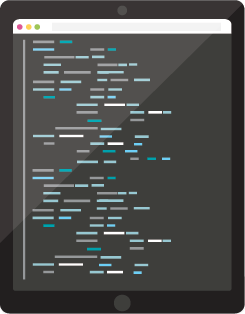 Developers are introducing vulnerabilities by poorly configuring elements that are actually meant to keep
application data safe.
Developers are introducing vulnerabilities by poorly configuring elements that are actually meant to keep
application data safe.
Remediation Analysis
While it is important to understand the universal state of vulnerabilities across the entire code base, security practitioners will find some of the most useful metrics for AppSec improvement revolve around the impact that reassessment and remediation can have upon flaw density and fix rates. The following statistics are where the rubber meets the road when it comes to the incremental improvements that can be achieved through a programmatic approach to application security.
REASSESSMENT RATES
Let's start first with how often organizations are reassessing applications in order to track improvements over time once remediation efforts have been made following the initial scan. Reassessments are crucial for not only determining if fixes have been made, but also if any new vulnerabilities have been introduced as a result of the remediation process. On a positive note, we've passed the tipping point where the majority of applications are rescanned once they've been initially tested. However, it is important to keep in mind that a single assessment is still a popular use case for many applications
KEY REASSESSMENT STATISTICS

Only one scan

Rescanned at least once 1
1 See appendix for more detailed information about the methodology behind these reassessment rates
AVG # OF SCANS PER APP 7
MEDIAN # OF SCANS PER APP 2
Our figures show that for the most part, organizations perform a small number of rescans in order to get their tested applications in line with policy. Approximately 51% of applications receive between two to 15 scans in an 18-month period.
However, there are a statistically significant number of applications receiving much more reassessment activity. Approximately 9% of all applications get more than 15 policy scans within that same time period. The max number was 776 scans, or more than 1.4 scans per day; this number was even higher when testing in off-the-record Developer Sandboxes, approaching six scans per day. Security practitioners should pay attention to these extreme numbers at the maximum range as they indicate a coming sea change in new methods of development. This level of frequency suggests a move toward DevOps and continuous delivery development patterns that emphasize small incremental improvements to code that utilize integrated scanning practices.
1
Some applications were scanned against security policies as much as 776 times in 18 months
2
That's 1.4 times per day
3
When scanned in sandbox mode not tracked by security/compliance teams, some applications were scanned almost 6 times per day
FLAW DENSITY
Flaw density can be a tricky metric to track, but when used well it can provide good visibility into risk reduction trends across an entire code base. By keeping tabs on flaw density per MB of code, it is possible to track an apples-to-apples comparison of how vulnerability-ridden the application remains over time, even as it changes in size by adding or subtracting functionality, libraries and more. This foundational metric also offers a good measuring stick to track how certain remediation actions and educational initiatives impact the overall security of code over time.
For example, we can see by comparing the flaw density on first assessment versus reassessment of applications how much impact was made through remediation efforts.
| FIRST SCAN LATEST SCAN | ||
| All apps |

|
2 See appendix for more detail on methodology behind flaw density statistics |
When organizations start to take their AppSec process to the next level through more advanced best practices, the risk reduction grows even more dramatic. For example, organizations that employ remediation coaching services see a 1.45x improvement in flaw density reduction from their efforts. And those who arm their developers with eLearning opportunities are logging a whopping 6x improvement in flaw density reduction through their remediation practices.
| FIRST SCAN LATEST SCAN | REDUCTION | |
| No readout requested |

|
38.66 |
| Readout requested |

|
21.74 |
| Difference | 1.45x |
| FIRST SCAN LATEST SCAN | REDUCTION | |
| No eLearning subscription |

|
9.1% |
| eLearning subscription |

|
55.0% |
| Difference |
6x |

FIX RATE: FIXED VERSUS FOUND
In the State of Software Security v6, we looked for the first time at fix rates of vulnerabilities. The idea behind this metric is to track the number of vulnerabilities fixed as a percentage of the total number of vulnerabilities found. As we reviewed the data from v6 over the last year, we realized that there was an overlooked factor that could potentially be distorting our fix-rate calculations, namely reopen rates.
The Veracode Application Security Platform identifies four possible states for a static or dynamic vulnerability: New, Open, Fixed, and Reopened. The key to understanding the distortion lies in the final two vulnerability types:

“Fixed” is used for vulnerabilities that were found in an early scan that are no longer found in a subsequent scan; and

“Reopened” identifies a vulnerability that was found in an earlier scan, marked as “Fixed” in a subsequent scan, and then reappeared in a later scan.
We recognized that there was a greater impact on fix rates from vulnerabilities that were reopened than originally thought. The problem happens if a scan does not identify a vulnerability correctly as having been found in a prior scan. Both static and dynamic testing in Veracode's analysis have features designed to ensure that we do everything possible to “re-find” previously found vulnerabilities and therefore avoid prematurely closing a vulnerability.
Based on these methods, we've found that the number of reopened vulnerabilities present in reassessed applications are statistically significant and need to be included as a part of fix-rate metrics. We believe that reopen rates represent one of two scenarios:

Changes in application scope, such as a developer not submitting part of an application for scan.

Vulnerability fixes successfully completed in an early scan that are inadvertently undone in a later scan. This may be done by accidentally undoing a code protection on an existing code path, or inadvertently opening a new unprotected code path to the same line of code.
We have adjusted the fix rate calculation to account for this and are restating the fix rates from v6 to include reopened vulnerabilities as well. Whenever we cite a fix rate in this study, it is calculated including the reopen rate: "fixed vulnerabilities" minus "reopened vulnerabilities," divided by "all vulnerabilities found."
Overall, the organizations in the study fixed about 54% of the vulnerabilities found during the period, when adjusting for fixed vulnerabilities that were later reopened. This remediation rate includes both vulnerabilities found and fixed during the study and vulnerabilities fixed that were found prior to the study (“security debt”). This is an improvement from the fix rate in SOSS v6, which was 51%.
Average fix rates
VOLUME 6 VOLUME 7

The overall fix rates detailed in the image above are calculated against statistics drawn from what the Veracode Application Security Platform calls the "Policy Space." These are on-the-record assessments that are evaluated against an organization's official application security policy, with the results available for review in the management console. These measurements from the policy space present a valuable tool for accountability and compliance prior to software release, but the pressure to improve these metrics can sometimes provide a perverse incentive for developers to assess less frequently throughout the SDLC.
Developers can grow very frustrated when they work to improve the overall security of their applications through frequent testing only to be hammered for policy violations while the application is still in active development. In order to encourage testing early and often by developers, Veracode also offers "Developer Sandbox" testing that offers an assessment space that isn't tied to compliance metrics and whose output is private to the developer. These sandbox scans give the developer the flexibility to continually improve code through frequent assessment via full application scans or scans of single components.
The telling thing about Developer Sandbox assessments is that they don't just take the heat off of developers and make them more likely to cooperate with the security team. They also do a lot to improve long-term application security. That's reflected in fix-rate statistics if you start tracking them by whether or not Developer Sandbox tests were completed prior to Policy Space tests.
When we look at the fix rate of organizations that don't utilize sandbox code, their average fix rates are well below the average. Meanwhile, organizations that perform even just one sandbox scan during early stages of the SDLC report above-average fix rates.
Improvement in fix rates via off-the-record developer scanning (Developer Sandbox)
NO SANDBOX SCANS AT LEAST ONE SANDBOX SCAN

These statistics from the image above are a testament to the power of developer-led efforts to push security "to the left" through security testing and remediation earlier in the SDLC.
WHAT DOES "GOOD" LOOK LIKE?
Veracode's analysis of remediation statistics find that even the most average of application security programs is able to move the needle on application risk postures in statistically meaningful ways. However, we see the cream truly rise to the top when examining the top quartile of performers, both within small and large application security programs.
To help organizations benchmark themselves against the very best in application security practices, we've taken a detailed look at vulnerability fix rates of the top performers versus average performers. The categories were further bisected by large programs (more than 20 applications managed) and small programs, for more accurate points of reference.
Remediation in top-quartile programs
MEAN FIX RATE MEDIAN FIX RATE TOP QUARTILE FIX RATE
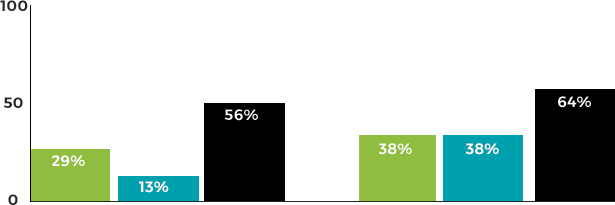
For large programs, top performers did 68% better than their average-performing counterparts. This kind of drastic difference illustrates how dramatically a program can improve through establishment of best practices. Many of these practices have already been highlighted in the report above. They include:
- readout calls for remediation coaching;
- eLearning subscriptions to improve developer skills;
- using more than one assessment technique;
- leveraging Developer Sandbox testing for more frequent unofficial scans; and
- tracking progress against the benchmarks presented in this report.

Spotlight on Component Usage
New this year to the SOSS is a spotlight analysis on component usage. Continued pressure to build high-quality software with ever-shorter development cycles and the ongoing explosion of new architecture patterns, such as microservices, has developers doubling down on the already prevailing dependence of third-party components in enterprise applications. Given this, Veracode wanted to gain a better understanding of the high-level of third-party component usage and how this relates to the overall state of software security.
This year we started this exploration through a close look at component usage by Java developers in particular—we'll likely continue this discussion next year with further analysis.

COMMON JAVA VULNERABILITIES
In order to set the stage for vulnerability analysis, we started with a basic look at the most common Java components used by our customers overall.
| COMPONENT NAME | VERSION | % APPS |
| aopalliance-1.0.jar | 1.0 | 39.5% |
| portlet-api_2.0_spec-1.0.jar | 1.0 | 38.2% |
| dom4j-1.6.1.jar | 1.6.1 | 29.7% |
| commons-logging-1.1.1.jar | 1.1.1 | 28.5% |
| commons-httpclient-3.1.jar | 3.1 | 26.0% |
| commons-collections-3.2.1.jar | 3.2.1 | 25.0% |
| portal-service.jar | 6.2.2 | 23.6% |
| util-taglib.jar | 6.2.3 | 23.2% |
| activation-1.1.jar | 1.1 | 23.1% |
| jstl-1.2.jar | 1.2 | 23.0% |
| commons-lang-2.6.jar | 2.6 | 18.4% |
| stax-api-1.0.1.jar | 1.0.1 | 17.5% |
| commons-beanutils-1.7.0.jar | 1.7.0 | 16.2% |
| antlr-2.7.7.jar | 2.7.7 | 16.1% |
| commons-digester-1.8.jar | 1.8 | 15.8% |
| log4j-1.2.17.jar | 1.2.17 | 14.7% |
| stax-api-1.0-2.jar | 1.0-2 | 14.5% |
| xpp3_min-1.1.4c.jar | 1.1.4c | 14.4% |
| xml-resolver-1.2.jar | 1.2 | 14.1% |
| commons-discovery-0.2.jar | 0.2 | 13.8% |
When we saw the most common component was an odd AOP Alliance JAR file, it gave us pause, but then we realized that it is actually a dependency of the Spring framework that isn't necessarily selected or installed by the typical developer on purpose. In a similar vein, we found that there are a number of cases where there's a library repeating certain kinds of groupings, such as a number of components from Apache Commons that are clustered in the top 10 instances of this list.
The big observation here is that when we really dig into the most common components used in the enterprises, there are a lot of hidden surprises as dependencies come into play. This can pose a real challenge when tracking common component vulnerabilities. For example, Commons-collections-3.2.1 is the sixth most common component overall and the most prevalent component with high vulnerabilities, as you'll see in the table below.
| LIBRARY | VERSION | % OF JAVA APPLICATIONS |
| commons-collections-3.2.1.jar | 3.2.1 | 25.0 |
| commons-fileupload-1.2.1.jar | 1.2.1 | 10.4 |
| batik-css-1.7.jar 1.7 | 1.7 | 9.5% |
| batik-util-1.7.jar 1.7 | 1.7 | 9.4% |
| commons-fileupload-1.2.jar | 1.2 | 9.3 |
| batik-ext-1.7.jar 1.7 | 1.7 | 9.2% |
| spring-web-3.1.1.RELEASE.jar | 3.1.1.RELEASE | 4.7% |
| spring-core-3.1.1.RELEASE.jar | 3.1.1.RELEASE | 4.7% |
| spring-beans-3.1.1.RELEASE.jar | 3.1.1.RELEASE | 4.6% |
| spring-context-3.1.1.RELEASE.jar | 3.1.1.RELEASE | 4.5% |
| spring-expression-3.1.1.RELEASE.jar | 3.1.1.RELEASE | 4.4% |
| spring-jdbc-3.1.1.RELEASE.jar | 3.1.1.RELEASE | 4.4% |
| struts-1.2.9.jar 1.2.9 | 1.2.9 | 4.3% |
| spring-aop-3.1.1.RELEASE.jar | 3.1.1.RELEASE | 4.3% |
| spring-asm-3.1.1.RELEASE.jar | 3.1.1.RELEASE | 4.3% |
| spring-tx-3.1.1.RELEASE.jar | 3.1.1.RELEASE | 4.2% |
| spring-context-support-3.1.1.RELEASE.jar | 3.1.1.RELEASE | 4.2% |
| spring-orm-3.1.1.RELEASE.jar | 3.1.1.RELEASE | 3.8% |
| spring-jms-3.1.1.RELEASE.jar | 3.1.1.RELEASE | 3.8% |
| spring-webmvc-3.1.1.RELEASE.jar | 3.1.1.RELEASE | 3.8% |
But the table above was compiled by focusing on all Java component versions that had a Common Vulnerability Scoring System (CVSS) score of 6.1 or higher. Prevalence was based on the percentage of Java applications affected and the percentage of all static applications assessed during this period.
This distribution gives us a good platform to start making some vital observations about component vulnerabilities. For example, the most commonly occurring vulnerable component was released in July of 2013, but the vulnerability in question wasn't identified and patched until November 2015. This was in response to a Java deserialization vulnerability that wasn't known at the beginning of the data collection period, so a lot of organizations may not have known they had a problem at the time that the component was assessed. The vulnerability is observed in more than 30% of Java applications—we'll dig further into this in the case study in the section below. Meanwhile, the second most prevalent component vulnerability was released in January 2008 and patched in 2010 with a vulnerability observed in over 12% of all Java applications.
The point here is that while the high prevalence of the most common vulnerability is understandable given the relatively recent patching of the component, the second most common vulnerability was patched some time ago. This shows that many organizations may not even realize that they've got a risk in that particular component.
Another additional observation we found was that version prevalence doesn't correlate with risk. When we took a look at the struts library midway down the table, we found that while a decent proportion of apps use a relatively safe version of the application, many more are still using moderately or very risky old versions of the library.
Struts version distribution
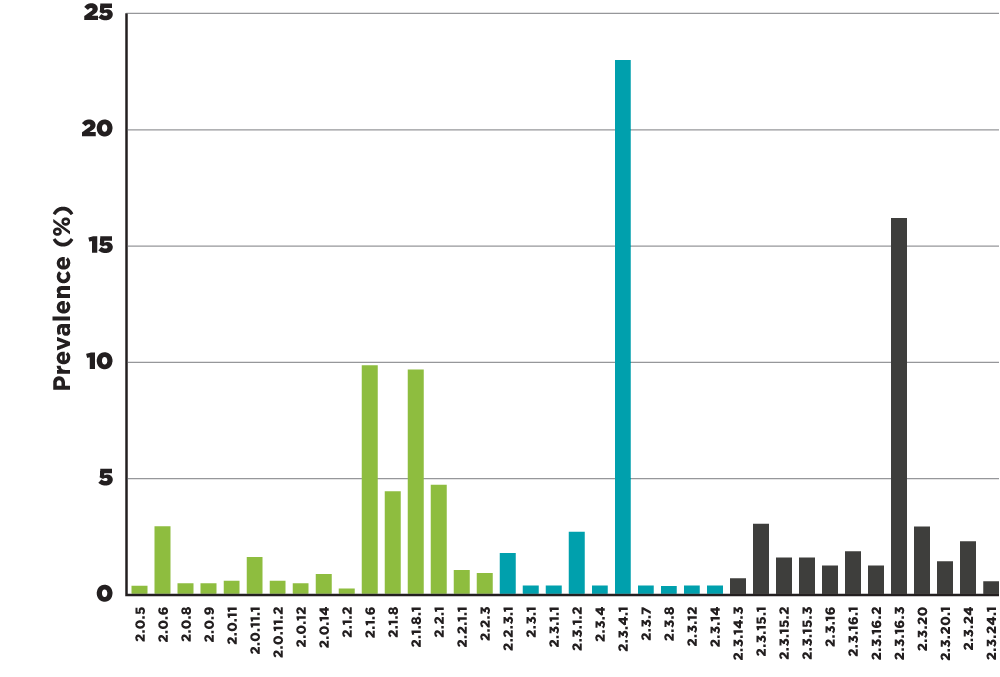
Source: Veracode
Our data shows that failing to upgrade components increases risk over time. For example, the newer versions marked with the green check do not have zero vulnerabilities. They had zero known vulnerabilities at the time the data was pulled; all of the versions have vulnerabilities now.
Security teams need to encourage and facilitate application developers in paying attention to the composition of their applications and keeping open-source libraries up to date.
One final component vulnerability distribution observation to note is that even though they may have similar patterns of component usage in internally developed code, different industries vary when it comes to the distribution of their third-party component risk. For example, financial services has been looking at component risk for a while and has relatively low exposure to top threats like the Java deserialization vulnerabilities in Commons Collections, whereas the tech industry has very high exposure.
| INDUSTRY | COMPONENT | VERSION | % OF JAVA APPS IN INDUSTRY |
| Tech | commons-collections-3.2.1.jar | 3.2.1 | 67.9% |
| Tech | commons-fileupload-1.2.1.jar | 1.2.1 | 20.3% |
| Tech | spring-aop-3.1.1.RELEASE.jar | 3.1.1.RELEASE | 18.6% |
| Tech | spring-beans-3.1.1.RELEASE.jar | 3.1.1.RELEASE | 18.6% |
| Tech | spring-context-3.1.1.RELEASE.jar | 3.1.1.RELEASE | 18.6% |
| Tech | spring-core-3.1.1.RELEASE.jar | 3.1.1.RELEASE | 18.6% |
| Tech | spring-expression-3.1.1.RELEASE.jar | 3.1.1.RELEASE | 18.6% |
| Tech | spring-web-3.1.1.RELEASE.jar | 3.1.1.RELEASE | 18.5% |
| Tech | spring-context-support-3.1.1.RELEASE.jar | 3.1.1.RELEASE | 18.4% |
| Tech | shiro-core-1.2.0.jar | 1.2.0 | 18.4% |
| Financial Services | commons-collections-3.2.1.jar | 3.2.1 | 22.4% |
| Financial Services | batik-ext-1.7.jarr | 1.7 | 13.4% |
| Financial Services | batik-css-1.7.jar | 1.7 | 13.2% |
| Financial Services | batik-util-1.7.jar | 1.7 | 13.2% |
| Financial Services | commons-fileupload-1.2.jar | 1.2 | 12.2% |
| Financial Services | commons-fileupload-1.2.1.jar | 1.2.1 | 8.6% |
| Financial Services | commons-fileupload-1.2.2.jar | 1.2.2 | 5.4% |
| Financial Services | commons-fileupload-1.2.2.jar | 1.1 | 3.7% |
| Financial Services | postgresql-9.1-901.jdbc4.jar | 9.1-901.jdbc4 | 3.5% |
| Financial Services | spring-beans-3.0.5.RELEASE.jar | 3.0.5.RELEASE | 3.0% |
| Government | commons-collections-3.2.1.jar | 3.2.1 | 16.0% |
| Government | commons-collections-3.2.1.jar | 1.1 | 9.5% |
| Government | commons-fileupload-1.1.1.jar | 1.1.1 | 6.9% |
| Government | struts-core-1.3.8.jar | 1.3.8 | 6.9% |
| Government | struts-taglib-1.3.8.jar | 1.3.8 | 6.9% |
| Government | struts-el-1.3.8.jar | 1.3.8 | 6.5% |
| Government | struts-extras-1.3.8.jar | 1.3.8 | 6.5% |
| Government | struts-faces-1.3.8.jar | 1.3.8 | 6.1% |
| Government | struts-mailreader-dao-1.3.8.jar | 1.3.8 | 6.1% |
| Government | struts-scripting-1.3.8.jar | 1.3.8 | 6.1% |
| Healthcare | commons-collections-3.2.1.jar | 3.2.1 | 42.1% |
| Healthcare | batik-util-1.7.jar | 1.7 | 17.5% |
| Healthcare | commons-fileupload-1.2.1.jar | 1.2.1 | 17.5% |
| Healthcare | commons-fileupload-1.2.2.jar | 1.2.2 | 15.8% |
| Healthcare | batik-css-1.7.jar | 1.7 | 14.0% |
| Healthcare | batik-ext-1.7.jar | 1.7 | 14.0% |
| Healthcare | commons-fileupload-1.3.jar | 1.3 | 7.0% |
| Healthcare | axis2-1.4.1.jar | 1.4.1 | 5.3% |
| Healthcare | commons-fileupload-1.2.jar | 1.2 | 5.3% |
| Healthcare | spring-jdbc-3.0.7.RELEASE.jar | 3.0.7.RELEASE | 5.3% |
| Manufacturing | commons-collections-3.2.1.jar | 3.2.1 | 20.4% |
| Manufacturing | commons-fileupload-1.2.jar | 1.2 | 8.0% |
| Manufacturing | commons-fileupload-1.2.1.jar | 1.2.1 | 7.5% |
| Manufacturing | batik-css-1.7.jar | 1.7 | 7.0% |
| Manufacturing | batik-util-1.7.jar | 1.7 | 6.8% |
| Manufacturing | batik-ext-1.7.jar | 1.7 | 6.4% |
| Manufacturing | commons-fileupload-1.2.2.jar | 1.2.2 | 4.8% |
| Manufacturing | commons-fileupload-1.1.1.jar | 1.1.1 | 3.3% |
| Manufacturing | spring-asm-3.1.2.RELEASE.jar | 3.1.2.RELEASE | 2.8% |
| Manufacturing | spring-beans-3.1.2.RELEASE.jar | 3.1.2.RELEASE | 2.8% |
| Retail and Hospitality | org.springframework.aop-3.0.5.RELEASE.jar | 3.1.0.RELEASE | 4.7% |
| Retail and Hospitality | org.springframework.asm-3.0.5.RELEASE.jar | 3.1.0.RELEASE | 4.7% |
| Retail and Hospitality | org.springframework.beans-3.0.5.RELEASE.jar | 3.1.0.RELEASE | 4.6% |
| Retail and Hospitality | org.springframework.context-3.0.5.RELEASE.jar | 3.0.5.RELEASE | 16.2% |
| Retail and Hospitality | org.springframework.context.support-3.0.5.RELEASE.jar | 3.0.5.RELEASE | 16.2% |
| Retail and Hospitality | org.springframework.core-3.0.5.RELEASE.jar | 3.0.5.RELEASE | 16.2% |
| Retail and Hospitality | org.springframework.expression-3.0.5.RELEASE.jar | 3.0.5.RELEASE | 16.2% |
| Retail and Hospitality | org.springframework.oxm-3.0.5.RELEASE.jar | 3.0.5.RELEASE | 16.2% |
| Retail and Hospitality | org.springframework.transaction-3.0.5.RELEASE.jar | 3.0.5.RELEASE | 16.2% |
| Retail and Hospitality | org.springframework.web-3.0.5.RELEASE.jar | 3.0.5.RELEASE | 16.2% |
| Other | commons-collections-3.2.1.jar | 3.1.2.RELEASE | 2.8% |
| Other | batik-css-1.7.jar | 3.1.2.RELEASE | 2.8% |
| Other | batik-util-1.7.jar | 3.1.2.RELEASE | 2.8% |
| Other | batik-ext-1.7.jar | 3.1.2.RELEASE | 2.8% |
| Other | commons-fileupload-1.2.jar | 3.1.2.RELEASE | 2.8% |
| Other | commons-fileupload-1.2.1.jar | 3.1.2.RELEASE | 2.8% |
| Other | commons-fileupload-1.2.2.jar | 3.1.2.RELEASE | 2.8% |
| Other | spring-core-3.1.0.RELEASE.jar | 3.1.2.RELEASE | 2.8% |
| Other | spring-web-3.1.0.RELEASE.jar | 3.1.2.RELEASE | 2.8% |
| Other | spring-aop-3.1.0.RELEASE.jar | 3.1.2.RELEASE | 2.8% |

A COMPONENT'S CRITICAL VULNERABILITY CASE STUDY
In the previous section, we already started to explain some of the significance around the most commonly present component with critical vulnerabilities, commons-collections-3.2.1.jar. The background around this component and its most dangerous vulnerability deserves an even more complete explanation, as it has some important security considerations wrapped around its story.
| COMPONENT NAME | VERSION | % APPS AFFECTED |
| commons-collections-3.2.1.jar | 3.2.1 | 26.3% |
| commons-collections-3.2.jar | 3.2 | 11.8% |
| commons-collections-3.1.jar | 3.1 | 39.4% |
| commons-collections.jar | Unknown | 2.9% |
| commons-collections4-4.0.jar | 4.0 | 2.3% |
| commons-collections-2.1.1.jar | 2.1.1 | 2.2% |
| commons-collections-3.2.2.jar | 3.2.2 | 1.8% |
| commons-collections-2.1.jar | 2.1 | 1.7% |
| commons-collections4-4.1.jar | 4.1 | 0.6% |
| commons-collections-3.0.jar | 3.0 | 0.5% |
| commons-collections-2.0.jar | 2.0 | 0.1% |
predates introduction of the vulnerability
vulnerable
patched to remove the vulnerability
In January 2015, an exploit framework was released for a previously theoretical vulnerability related to a programming practice called "deserialization." This lets you read an object from disk and use it in an application. The bug would allow an attacker to execute arbitrary code while the object was being deserialized—basically, do anything they wanted on the vulnerable machine.
In November 2015, researchers published exploits for five widely used systems—JBoss, IBM WebSphere, Jenkins, OpenNMS and the Oracle WebLogic server—all leveraging a deserialization vulnerability in Apache Commons Collections. This was no longer a theoretical vulnerability, but a highly exploitable, widespread issue. The Apache Commons project issued patches for the vulnerability, which affected all versions of Commons Collections 3.x up to and including v. 3.2.1 and v4.0. The patches, v3.2.2 and 4.1, eliminated the vulnerability.
How widely used was the core shared object? As shown above, the Apache Commons Collections v. 3.2.1 component was the single most prevalent vulnerable component version across our entire data set of Java applications, being found in 25.0% of all Java applications. In some industries the risk was even higher, with this version being found in 67% of all Java applications in the technology industry vertical.
And that was just the version in which the vulnerability was first found; when looking at all vulnerable versions, 50.3% of all applications Veracode scanned contained a vulnerable version of the Apache Commons Collections library.
The problem goes even further. A Java library that uses Apache Commons Collections and does deserialization may also exhibit the vulnerability. Caleb Fenton at Sourceclear has assembled a candidate list of libraries that may be vulnerable to deserialization exploits thanks to their use of Apache Commons, including Apache Hadoop Common, Jasper Reports, OWASP ESAPI (when using Base64.decodeToObject()) and others. (Fenton, Caleb, "Commons Collections Deserialization Vulnerability Research Findings," SRC:CLR (blog), 2015-12-02.) It should also be noted that Apache Commons Collections is not the only library that performs unsafe deserialization; vulnerabilities related to serialization and deserialization were disclosed in 2016 in Apache ActiveMQ and Apache Camel.
What do we learn from this? The Java deserialization vulnerability in Apache Commons Collections is an interesting example of an open-source, third-party component vulnerability, because it went from unknown to critical and highly exploitable, and because it was widely used in a variety of standard "infrastructure" applications—web servers, application servers, CI servers, etc. But it's worth noting that the issue was not just in the infrastructure applications, but in any application that uses Apache Commons Collections v.3.0 - 3.2.1 or 4.0. Addressing this vulnerability requires a broader response than just patching servers; it requires visibility into the component supply chain for all of your applications.
Even Broader Implications of the Apache Commmons Collections Deserialization Vulnerability
And it's broader than that, as well. Veracode introduced a check for unsafe deserialization (CWE 502) in a customer's own Java code—not in an open-source component—in our November 2015 release. In the four months from then to the end of our data set for this volume of State of Software Security, we detected the vulnerability in 24%, or almost one in four, of all Java applications scanned. The prevalence was substantially higher in commercial software, where we found the vulnerability in 41% of all applications.
This simply reinforces the point that one application security technology is not sufficient to guard against the vulnerability landscape. A combination approach is needed that leverages appropriate checks for your own code and for the code in your software supply chain.
Newly discovered vulnerabilities are rarely only in open-source code; you need to be able to look for them in closed source as well.
For a proper application security program, you need to be able to look at vulnerabilities in open-source and commercial components, code written by your team, and code written by your suppliers as well.

Spotlight on Industry Performance
In the last volume of SOSS, Veracode spent a considerable amount of time telling the story of stack ranking of industry performance and taking an overall look at the numbers based on verticals. We believe it is important to continue to look at industry performance, which is why we're issuing another update to show how things have changed since 2015, and also spending some time analyzing healthcare peformance, especially in the light of growing healthcare breach incident rates over the past year.
FIRST-TIME PASS RATES BY INDUSTRY
Based on OWASP policy compliance pass rates for first-time scans, we can see that the data shows government with the lowest pass rate for the second year running, with healthcare edging down to second from the bottom category based on pass rank. On a positive note, we saw slight improvement in every industry vertical except financial services.
| INDUSTRY VERTICAL | % NOT PASSED | % PASS | % PASS 2015 |
| Other | 59% | 40% | 30% |
| Financial Services | 61% | 39% | 42% |
| Manufacturing | 61% | 39% | 35% |
| Government | 75% | 25% | 24% |
| Retail and Hospitality | 62% | 38% | 30% |
| Tech | 62% | 38% | 32% |
| Healthcare | 67% | 33% | 31% |
The slight slide back in financial services illustrates the same factors we discussed in the first section of this volume of SOSS with regard to first-time scan pass rates. Even in a sector like financial services with a high degree of application security maturity compared to other industries, we're still just as likely to see small down trends in initial pass rates due to the nature of the unimproved corps of applications. Until an organization gets to a point where every piece of software an organization has ever written prior to secure SDLC practices has been inspected, there's no reasonable expectation that the next set of applications tested will be any better than the ones tested before.
Most organizations have more software written than the project that they’re starting, so even if they put a secure development initiative in place they shouldn’t expect to see the fruits of that in first-time quality right away. It takes a long time for that to happen.

INDUSTRY VERTICAL FIX RATES
The first-time pass-rate measurement conundrum is why it is crucial to look at other metrics to get a 'true-north' measure of the state of software security by industry. One of the most telling, in our mind, is the vulnerability fix rate we discussed at the end of the remediation analysis section above.
As we explained, we restated our figures from the last volume to better account for the incidence of reopened vulnerabilities. With that adjustment in mind, the table below shows what industry performance looked like this year and last year.
| ADJ FIXED V6 | ADJUSTED FIXED % 2016 | REOPEN % | |
| Financial services | 51% | 59% | 22% |
| Manufacturing | 66% | 71% | 15% |
| Government | 58% | 57% | 25% |
| Healthcare | 34% | 34% | 7% |
| Retail & Hospitality | 57% | 67% | 23% |
| Other | 40% | 36% | |
| Tech | 42.4% | 42.2% | 12.6% |
Healthcare’s bottom performance on fix rate is troubling. Healthcare lags the top performer, manufacturing, in its fix rate by a two-to-one ratio. Does the gap reflect an inability to appropriately address vulnerabilities once they've been found, or does it point to some other structural constraint that holds healthcare back?
INDUSTRY VERTICAL VULNERABILITY CATEGORY PREVALENCE
As shown in the fix rates detailed below, there's clearly room for improvement no matter the sector. So, let's look at where each industry will likely need to focus its efforts. The distribution of vulnerabilities found in first-time scans based on industry also offers some significant observations.
| CWE CATEGORY | –% APPS |
| MANUFACTURING | |
| Information Leakage | 26.2% |
| Code Quality | 26.1% |
| Directory Traversal | 24.0% |
| Cryptographic Issues | 22.9% |
| CRLF Injection | 21.0% |
| Cross-Site Scripting | 20.4% |
| Insufficient Input Validation | 17.6% |
| Credentials Management | 14.6% |
| SQL Injection | 13.9% |
| Time and State | 11.1% |
| HEALTHCARE | |
| Cryptographic Issues | 72.9% |
| Information Leakage | 65.6% |
| Code Quality | 60.1% |
| Insufficient Input Validation | 52.3% |
| CRLF Injection | 48.2% |
| Credentials Management | 47.7% |
| Directory Traversal | 45.9% |
| Cross-Site Scripting (XSS) | 45.4% |
| SQL Injection | 28.4% |
| Time and State | 23.4% |
| GOVERNMENT | |
| Information Leakage | 69.3% |
| Cross-Site Scripting (XSS) | 68.5% |
| Code Quality | 62.3% |
| Code Quality | 62.3% |
| Cryptographic Issues | 56.1% |
| Insufficient Input Validation | 54.6% |
| CRLF Injection | 50.3% |
| Directory Traversal | 44.4% |
| SQL Injection | 40.0% |
| Credentials Management | 30.8% |
| Time and State | 21.3% |
| FINANCIAL SERVICES | |
| Code Quality | 66.8% |
| Information Leakage | 65.7% |
| Cryptographic Issues | 62.0% |
| CRLF Injection | 59.5% |
| Directory Traversal | 51.5% |
| Cross-Site Scripting (XSS) | 51.0% |
| Insufficient Input Validation | 49.7% |
| Credentials Management | 41.2% |
| SQL Injectiont | 31.3% |
| Time and State | 24.4% |
| RETAIL & HOSPITALITY | |
| Code Quality | 69.0% |
| Cryptographic Issues | 68.7% |
| Information Leakage | 67.0% |
| CRLF Injection | 57.7% |
| Directory Traversal | 55.5% |
| Insufficient Input Validation | 48.2% |
| Cross-Site Scripting (XSS) | 45.9% |
| Credentials Management | 38.6% |
| SQL Injection | 33.5% |
| Time and State | 27.0% |
| TECHNOLOGY | |
| Information Leakage | 74.4% |
| Code Quality | 73.3% |
| Cryptographic Issues | 67.5% |
| CRLF Injection | 62.4% |
| Directory Traversal | 53.0% |
| Cross-Site Scripting (XSS) | 51.1% |
| Credentials Management | 46.6% |
| Insufficient Input Validation | 44.7% |
| SQL Injection | 32.4% |
| Time and State | 29.2% |
| OTHER | |
| Cryptographic Issues | 64.0% |
| Information Leakage | 62.1% |
| Code Quality | 59.0% |
| CRLF Injection | 49.2% |
| Directory Traversal | 48.4% |
| Credentials Management | 44.2% |
| Cross-Site Scripting (XSS) | 43.4% |
| Insufficient Input Validation | 39.4% |
| SQL Injection | 27.6% |
| Time and State | 20.4% |
| VERTICAL | CROSS-SITE SCRIPTING | SQL INJECTION | CRYPTOGRAPHIC ISSUES | CREDENTIALS MANAGEMENT |
| Manufacturing | 20.4% | 13.9% | 22.9% | 14.6% |
| Healthcare | 45.4% | 28.4% | 72.9% | 47.7% |
| Government | 68.5% | 40.0% | 56.1% | 30.8% |
| Financial Services | 51.0% | 31.3% | 62.0% | 41.2% |
| Retail & Hospitality | 45.9% | 33.5% | 68.7% | 38.6% |
| Technology | 51.1% | 32.4% | 67.5% | 46.6% |
| Other | 43.4% | 27.6% | 64.0% | 44.2% |
As we can see in the two tables above, government organizations are still most likely to have both SQLi and XSS vulnerabilities in their code, a repeat from 2015. One thing we'd like to draw readers' attention to is the fact that healthcare organizations are most likely to be struck by cryptographic and credentials management issues. Given the concern for sensitive patient data under HIPAA regulations, we believe that these data-endangering vulnerabilities are noteworthy.
When we compare healthcare performance in cryptographic and credentials management issues versus a sector like retail and hospitality, the long-running impact of the prescriptive nature of PCI DSS compliance compared to HIPAA's outcome-oriented compliance goals could be coming home to roost. One other note, given these distributions and also fix-rate performance, is that manufacturing's outpacing of other industries could be indicative of that vertical's underlying DNA, which focuses around quality in every aspect of production and could be displaying that with regard to code quality.
On the industry front, we also wanted to take one final look at vulnerability distribution further broken out by programming language.
| PROGRAMMING LANGUAGE | FINANCIAL SERVICES | MANUFACTURING | TECH | RETAIL AND HOSPITALITY | OTHER | GOVERNMENT | HEALTHCARE |
| .Net | 38.33% | 33.76% | 27.59% | 40.68% | 27.66% | 52.20% | 46.90% |
| JavaScript | 47.29% | 39.09% | 46.86% | 37.24% | 42.10% | 35.05% | 25.22% |
| C++ | 1.46% | 8.39% | 3.40% | 2.70% | 3.18% | 0.00% | 0.00% |
| ColdFusion | 0.14% | 7.28% | 0.45% | 0.34% | 0.73% | 1.52% | 0.88% |
| Javascript | 4.98% | 2.62% | 5.74% | 7.77% | 6.92% | 3.49% | 11.50% |
| Android | 1.38% | 1.09% | 5.48% | 3.38% | 4.25% | 0.46% | 3.54% |
| iOS (Objective-C) | 1.52% | 1.71% | 4.82% | 3.38% | 4.60% | 0.00% | 7.52% |
| Classic ASP | 1.33% | 3.42% | 0.45% | 0.96% | 0.30% | 1.97% | 0.44% |
| PHP | 2.12% | 1.42% | 4.34% | 2.37% | 9.49% | 5.16% | 1.33% |
| VB6 | 0.84% | 0.91% | 0.22% | 0.34% | 0.43% | 0.15% | 0.00% |
| COBOL | 0.48% | 0.05% | 0.18% | 0.39% | 0.00% | 0.00% | 0.00% |
| Ruby | 0.03% | 0.08% | 0.16% | 0.06% | 0.00% | 0.00% | 0.00% |
| Other (J2ME, Windows Mobile) | 0.09% | 0.16% | 0.29% | 0.39% | 0.35% | 0.00% | 1.76% |
As you can see here, there are some noticable trends that present themselves. For example, the rapid adoption of JavaScript for server-side and mobile use in healthcare, retail, and financial services is giving rise to more prevalence in these vulnerabilities across their portfolios.
Meanwhile, as tech and retail and hospitality organizations make bigger investments in mobile, we'll continue to see a rise in Android and iOS vulnerability incidence.

Appendix
About the dataset
The data represents 337,742 application assessments submitted for analysis during the 18-month period from October 1, 2014 through March 31, 2016 by large and small companies, commercial software suppliers, open-source projects and software outsourcers. In most analyses, an application was counted only once, even if it was submitted multiple times as vulnerabilities were fixed and new versions uploaded. The report contains findings about applications that were subjected to static analysis, dynamic analysis, software composition analysis, and/or manual penetration testing through Veracode’s cloud-based platform. The report considers data that was provided by Veracode’s customers (application portfolio information, such as assurance level, industry, application origin) and information that was calculated or derived in the course of Veracode’s analysis (application size, application compiler and platform, types of vulnerabilities, Veracode Level —predefined security policies which are based on the NIST definitions of assurance levels).
Many applications are written in more than one programming language. In cases where results are reported by programming language, we examine the individual executable units of the application (modules, libraries), and report the primary programming language as being the language of the largest executable unit.
REASSESSMENT RATE METHODOLOGY
When we include all scan types, including those that may result in shutting down a site (specifically Dynamic MP), the rates of assessment break down as follows:
44%
Only assessed once
56%
Assessed more than once
Exploring the data further and restricting to deeper, “per-app” scan types (Static, DynamicDS), we find:
40%
Only assessed once
60%
Assessed more than once
AVG # OF SCANS PER APP 7
MEDIAN # OF SCANS PER APP 2
Histogram, # of Scans Per App
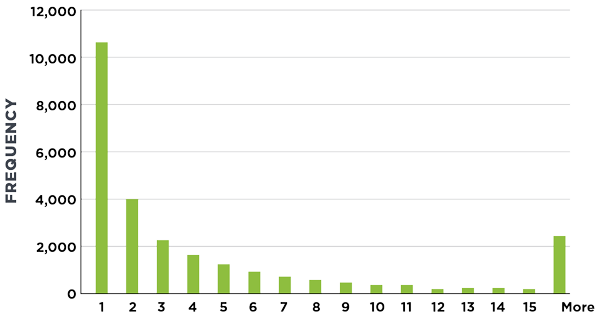
The distribution is almost identical when looking at static only when policy scans are used.
We then re-run the histograms looking at static when sandboxes are included.
| BIN | S+DS, POLICY SCAN ONLY % | S, SANDBOXES % |
| 1 | 40% | 38% |
| 2 | 15% | 13% |
| 3 | 9% | 8% |
| 4 | 6% | 6% |
| 5 | 5% | 4% |
| 6 | 3% | 4% |
| 7 | 3% | 3% |
| 8 | 2% | 2% |
| 9 | 2% | 2% |
| 10 | 1% | 2% |
| 11 | 1% | 1% |
| 12 | 1% | 1% |
| 13 | 1% | 1% |
| 14 | 1% | 1% |
| 15 | 1% | 1% |
| More | 9% | 12% |
Flaw Density Measurement Methodology
- Veracode supports multiple assessment technologies
- In Static and DynamicDS, rescans are used to
- verify fixes made after reviewing the results of the first scan
- ensure new vulnerabilities were not introduced
- check for newly discovered threats that may have been latent in the code but, thanks to new technology, can now be found
- Two ways to do rescanning
- Policy scan - default behavior, each scan evaluated against policy to calculate compliance, full application scan assumed
- Sandbox scan - optional, private sandboxes available, not evaluated against policy, may be partial or full application scan
Where we have looked at flaw density measurements, we have only evaluated flaw density within policy scans. We have not included flaw density in sandboxes, as the customer may not scan the same scope of the application in a sandbox as in a policy scan. Where we have looked at sandbox use, we have only looked at how it affected flaw density in the policy scans for the applications where sandboxes were used.
Flaw density by programming language and industry
State of Software Security Volume 7 includes data about average flaw density (the number of flaws, or vulnerabilities, per megabyte of executable code) as a way to measure remediation activity. We provide the following tables of average flaw density by language for reference.
Note: It is important to not draw too many conclusions from flaw density differences, as flaw density is affected by many factors. Language-specific differences in flaw density may be caused by the richness of the system APIs for a scripting language, which instruction sets are enabled in the compiler, 32-bit code versus 64-bit code (64-bit executables are much larger than 32-bit ones with the exact same source files), etc. Likewise, flaw density distributions within an industry are affected by language choice and application size as well as inherent application risk. Some of the same challenges apply to other measures of defect density, such as defects per KLOC (thousand lines of code).
| LANGUAGE | FLAW DENSITY PER MB | FLAW DENSITY PER MB (HIGH/VERY HIGH) |
| .Net | 19.3 | 3.3 |
| Android | 5.7 | 0.2 |
| Classic ASP | 849.9 | 400.0 |
| C++ | 12.7 | 3.2 |
| COBOL | 33.0 | 2.8 |
| ColdFusion | 52.8 | 38.5 |
| iOS (Objective-C) | 3.7 | 0.1 |
| J2ME | 40.3 | 0.0 |
| Java | 35.3 | 3.8 |
| JavaScript | 40.1 | 4.7 |
| PHP | 60.6 | 18.2 |
| Ruby | 2.3 | 0.2 |
| Ruby | 2.3 | 0.2 |
| VB6 | 66.3 | 14.4 |
| LANGUAGE | FLAW DENSITY PER MB | FLAW DENSITY PER MB - VH/H |
| Financial services | 33.18 | 4.26 |
| Manufacturing | 387 | 213.06 |
| Government | 48.95 | 5.90 |
| Healthcare | 10.03 | 1.70 |
| Retail & Hospitality | 28.49 | 3.09 |
| Other | 69.03 | 7.39 |
| Tech | 23.32 | 1.87 |
Industry Verticals
This report condenses information about applications coming from 34 different industry classifications into seven industry verticals. The component industry classifications come from Data.com via Salesforce.com, but Veracode has created the industry verticals below to simplify the analysis. A mapping of the component industries to industry verticals is provided below.
COMPONENT INDUSTRIES AS DEFINED IN DATA.COM

Financial services
Banking, Finance, Insurance

Manufacturing
Manufacturing, Aerospace

Technology
Technology, Telecommunications, Electronics, Software, Security Products and Services, Consulting, Computer Hardware

Retail & Hospitality
Retail, Hospitality

Government
Government

Healthcare
Healthcare, Pharmaceuticals

Other
Other, Biotechnology, Education, Entertainment, Transportation, Not for Profit, Apparel, Communications,
Engineering, Media, Media & Entertainment, Food & Beverage, Utilities, Energy, Machinery, Construction,
Chemicals, Not Specified, Shipping, Business Services, Automotive & Transport, Beverages, Recreation,
Real Estate, Membership Organizations, Environmental, Consumer Services
How are you tackling application security?
Get our tips and advice on starting or managing an AppSec program with our Ultimate Guide to Getting Started With Application Security.


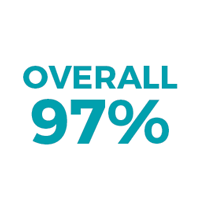 of all Java applications assessed had at least one component with a known vulnerability, regardless of severity.
of all Java applications assessed had at least one component with a known vulnerability, regardless of severity.